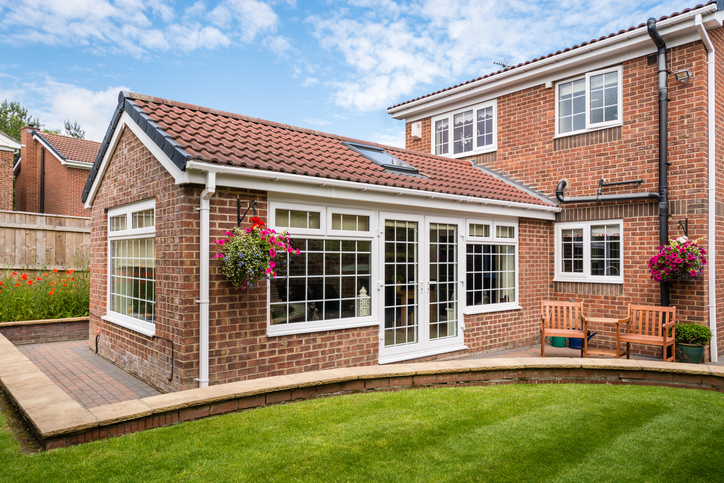In today’s dynamic housing market, more homeowners are choosing to extend their current properties rather than relocate. Whether it’s adding a new bedroom, expanding the kitchen, or creating a multifunctional open-plan living area, a home extension is a smart investment that adds space, functionality, and value.
This comprehensive guide explores everything you need to know about house extensions—from planning and design to budgeting and benefits—helping you make informed decisions and bring your vision to life.
Maximize your home’s potential with a custom home extension designed to fit your lifestyle and needs. Whether you’re adding a new bedroom, expanding your kitchen, or creating a spacious living area, a well-planned extension adds both space and value to your property. Our expert team works closely with you to design and build seamless additions that blend beautifully with your existing structure. Enjoy more room for your family, entertaining guests, or simply enhancing comfort. With quality craftsmanship, attention to detail, and personalized service, our home extension solutions help you make the most of your living space—efficiently and affordably.
Why Consider a Home Extension?
- More Living Space
One of the main reasons people opt for a home extension is the need for additional space. Growing families, changing lifestyles, or remote work arrangements often create demand for extra rooms without the hassle of moving.
- Increase Property Value
A well-designed extension can significantly enhance your home’s resale value. Whether it’s an extra bedroom, a larger kitchen, or a loft conversion, the added square footage can attract more buyers and boost your return on investment.
- Avoid Moving Costs
Moving house involves costs such as agent fees, stamp duty, legal charges, and moving services. A house extension eliminates these expenses while allowing you to remain in the community you love.
- Personalization
Extensions give you the opportunity to tailor your home exactly how you want it—whether that means building your dream kitchen, adding a home office, or creating an entertainment space.
Types of House Extensions
There are various types of extensions to suit different needs and property styles:
- Rear Extension
Built onto the back of the property, rear extensions are ideal for expanding kitchens, living rooms, or dining areas. They’re especially popular in detached or semi-detached homes.
- Side Return Extension
This makes use of the narrow strip of land at the side of a house. It’s a popular choice for Victorian or Edwardian terraced homes and works well for widening kitchens and creating open-plan layouts.
- Wraparound Extension
Combining both rear and side return extensions, a wraparound extension offers substantial additional space and can dramatically transform a home’s layout.
- Double-Storey Extension
This extends the house on two levels, adding rooms upstairs and downstairs. Though more complex and costly, it offers maximum space increase and long-term value.
- Loft Conversion
A loft extension transforms unused attic space into a bedroom, office, or guest suite. It’s a smart way to add living space without extending the property’s footprint.
- Basement Conversion
Though more complex and expensive, converting a basement can provide significant living space, especially in urban areas with limited outdoor room.
Planning and Regulations
Before you start any extension project, it’s essential to understand planning rules and building regulations.
- Planning Permission
In many areas, minor extensions may fall under “permitted development” and not require formal planning permission. However, larger projects or those affecting a listed building or conservation area will likely need approval. Always check with your local planning authority.
- Building Regulations
Regardless of planning permission, all extensions must meet building regulations for structural integrity, insulation, electrical safety, and ventilation. Your builder or architect should ensure compliance and coordinate inspections.
- Party Wall Agreement
If your extension involves work on or near a shared wall with a neighbor (such as in terraced or semi-detached homes), you may need a party wall agreement under the Party Wall Act.
- Conservation Areas
Homes located in conservation areas may face stricter regulations, especially regarding external alterations. Additional planning approval may be required.
Design Considerations
Working with a professional architect or designer is crucial to ensure your extension is not only functional but also complements your home’s existing character.
Key Design Tips:
- Maximize Natural Light: Use skylights, large windows, or bi-fold doors.
- Open Plan Living: Consider integrating the new space with the existing home for a cohesive flow.
- Future-Proofing: Think about how your needs may evolve—flexible spaces are key.
- Match Aesthetics: Use similar materials and finishes to maintain visual harmony with the original building.
Budgeting and Costs
The cost of a home extension varies widely based on size, location, materials, and design complexity.
Average Extension Costs (UK Estimates):
- Single-storey extension: £1,500 – £2,500 per m²
- Double-storey extension: £2,000 – £3,000 per m²
- Loft conversion: £30,000 – £50,000+
- Basement conversion: £100,000+
Other Cost Considerations:
- Architect/design fees (5–15% of project cost)
- Planning and building regulation fees
- Party wall surveyor costs
- Structural engineer fees
- Fixtures and finishes
- Unexpected contingencies (budget 10–15%)
Request quotes from multiple contractors, and don’t forget to ask for a detailed breakdown of costs.
Choosing the Right Professionals
A successful extension depends on the skills and reliability of your project team. This may include:
- Architect: Designs the extension and helps with planning approval.
- Structural Engineer: Assesses and plans for structural elements.
- Builder/Contractor: Executes the construction.
- Project Manager: Oversees timelines and coordination.
- Interior Designer: Adds finishing touches and space optimization.
Choose professionals with relevant experience, positive reviews, and proper credentials. Ask for portfolios, references, and ensure they are insured and licensed.
Construction Timeline
A typical single-storey extension can take 10–14 weeks, while larger or multi-level projects can take several months.
Project Phases:
- Design & Planning – 4–8 weeks
- Approvals & Documentation – 2–4 weeks
- Groundwork & Foundation – 1–2 weeks
- Structural Build – 4–8 weeks
- Plumbing, Electrical, & Insulation – 2–4 weeks
- Finishing & Decorating – 2–3 weeks
Delays can occur due to weather, supplier issues, or unforeseen structural challenges. Clear communication and contingency planning help manage timelines.
Benefits Beyond Space
The advantages of a house extension go far beyond just additional square footage.
Additional Benefits:
- Improved lifestyle and functionality
- Modernized home layout
- Enhanced energy efficiency with new insulation/windows
- Personal enjoyment and comfort
- Increased property value for resale or rental
Conclusion: Make the Most of Your Home
A home extension is one of the most effective ways to enhance your living space, improve property value, and meet your family’s evolving needs without the stress of moving. With the right planning, team, and design, your house extension can completely transform how you live and enjoy your home.
Take the first step today by consulting with an architect or builder to explore your options—and get ready to unlock your home’s true potential.




























